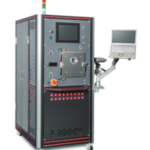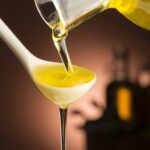As it has been well discussed, SPS has many advantages. It can produce good quality sintering compacts that could not be achieved by the conventional sintering method. It can reduce production costs because of its quick process. Most importantly, it can bring you a sintering compact with the desired performance and characteristics even if you don’t have the experience and know-how of powder metallurgy. However, we have to admit that some people may point out the disadvantages as follows.
(1) Sometimes, it’s difficult to maintain homogeneity especially in large scale due to the short-time temperature rise.
(2) The test results may vary depending on the sintering conditions and there are too many and wide range parameters.
(3) The performance and characteristics of the small and the large sample may not be the same even under the same sintering conditions.
Let’s check the above 3 points in detail.
(1) Heat inhomogeneity in large scale sample
This is a serious problem that can never be overlooked for the sintering technology as well as the material manufacturing process. In case of conventional sintering method, the heat insulation structure of the furnace is devised so that the heat of the entire furnace is equalized and the temperature is slowly raised in the furnace having the heat capacity required for heat equalization. With the long holding time, the temperature difference between the central and the outer peripheral part of the sintered compact and the center and both ends in the thickness direction will be eventually eliminated and the heat equalizing property of the sintered compact would be ensured. On the other hand, in case of SPS, although the mold has the same role to keep the heat at some point, its heat capacity can never be enough to keep the heat of the sintered compact uniform. Furthermore, the difference in resistance value appears as the difference in heat generation because of the nature of energized heating and SPS’s quick heating rate of 50-100 ° C / min. or higher, which is 20-100 times faster than the conventional heating rate of 1-5 ° C / min.
For the countermeasure, we can increase the resistance where the temperature is low, and/or decrease the resistance where the temperature is high so that the temperature can be positively homogenized by applying the fact that the heat generation changes depending on the resistance value due to energization sintering. To be more specific, we measure the temperature of each part of the sintered compact and change the resistance values of the mold, spacer, etc. according to the temperature distribution (change the dimensions, selection of mold materials with different resistivity, etc.) in order to obtain homogenized temperature.
Furthermore, since the temperature distribution may vary depending on the mold structure design and sintering conditions (heating rate, etc.), the temperature is positively and dynamically homogenized instead of slow heat equalization. Especially in large scale, thermal inhomogeneity on the sample is likely to occur in any case, we check the temperature distribution by multipoint temperature measurement and use the combination of control temperature such as average, maximum, and minimum temperature. (MMCS method / Multi-temperature Measurement system with Temperature selection / average temperature calculation Control System ).
(2) Too many/wide range parameters
Since SPS has many sintering parameters and each factor can dramatically change the outcomes, it seems to be difficult to determine the optimized sintering condition and control the characteristics of sintered compact. However, we would say it is actually the biggest merit of SPS.
In case of conventional sintering, heating rate cannot be changed but is determined and fixed by the furnace to be used. Moreover, such heating rate is always very slow and it does not make much sense to change the holding time. (For example, it takes 240 min. = 4 hours to raise the temperature to 1200 °C in a 5 °C / min. and it takes about the same amount of time to lower the temperature. In this case, considering the process time as a whole, it doesn’t make any big difference between 30min. or 60 min. holding time. That is, the holding time cannot be considered as the selectable parameter.) Since the pressing force is also determined and fixed by the strength of the mold, sintering conditions to be tried on conventional sintering would be maximum 4 or so (2 different sintering force and 2 different temperature). In these circumstances, it is common to change the starting material powder to make an achievement in case of conventional sintering. In order to improve the density, an auxiliary agent that facilitates the sintering shall be added. If the grain growth increases, a grain growth inhibitor shall be added. If the hardness decreases as a result, add the additive that can prevent it. Then, add some other agent and additives to improve the strength, the performance and characteristics…. You also need to determine which type and amount of the additive shall be selected. What combination can secure the required performance and characteristics? Or will it create the negative reaction?
Obviously, these cannot be determined without the advanced knowledge and experience in powder metallurgy. Moreover, since the conventional method requires very long time for its process, it is important to make an appropriate test plan based on experience and knowledge rather than blindly trying. For this reason, it is taken for granted that the experiments need to be arranged by the professional metallurgist in case of conventional sintering methods.
On the other hand, in case of SPS, not only the sintering temperature but also the heating rate can be selected from 5 – 200 ° C / min. The length of holding time is also important to be optimized since the heating rate can be very quick in SPS. The characteristics of sintered compact can be also changed by the pressure and ON / OFF pulse ratio. For example, there shall be 120 different sintering conditions if you pick 3 different heating rates, 2 conditions in temperature, holding time, and pressure respectively and 5 conditions in ON / OFF pulse ratio.
You may think it’s too many but it’s easy to try 2-5 typical sintering conditions to start since process of SPS tends to be very quick. Then, just compare and analyze the performance and characteristics of obtained samples and narrow down the sintering conditions that can achieve better results. No advanced knowledge in powder metallurgy is required. In many cases, desired performance and characteristics can be obtained with pure raw materials simply by changing the sintering conditions and this is one of the major reasons why numerous articles and patents for material development using SPS have been established.
(3) Inhomogeneity by sample size
It is often said that the same result cannot be obtained in SPS even if the same sintering condition is applied. In case of conventional technique, the difference in heat capacity between the small and the large diameter of the sintered compact is insignificant and the heat can be equalized regardless of the size by slow heating and long holding time. On the other hand, in SPS, changing the size of the mold means that the size of the furnace changes so the different temperature distribution will be created depending on the sintering conditions such as the heating rate according to the heat capacity of each furnace and it’s necessary to achieve thermal homogenization by the mold structure, electrical resistance, and temperature distribution as mentioned in (2).
In other words, by using the method (2), SPS can produce a sintered compact with uniform required performance and characteristics regardless the size. SPS has already been employed as a production / mass production technology because it has higher reproducibility than the conventional sintering method. It will be increasingly adopted in the industry as a production and a material manufacturing method and SPS products will be seen in the general market more common in near future.





